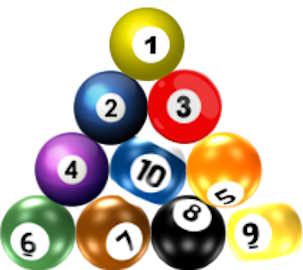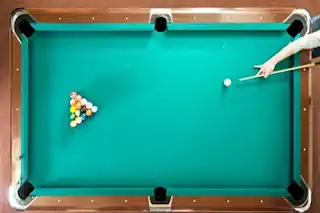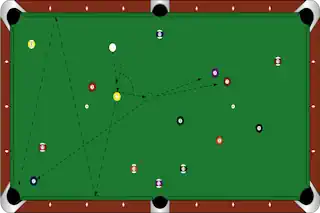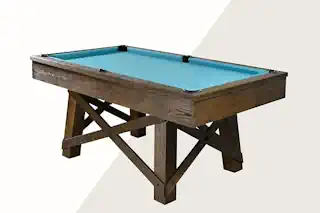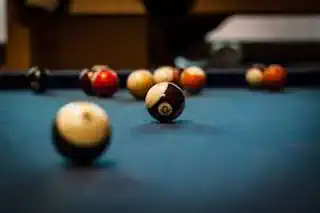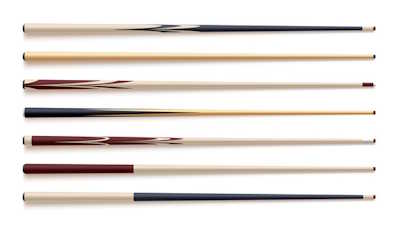How to Play 9 Ball Billiards – A Beginner’s Guide
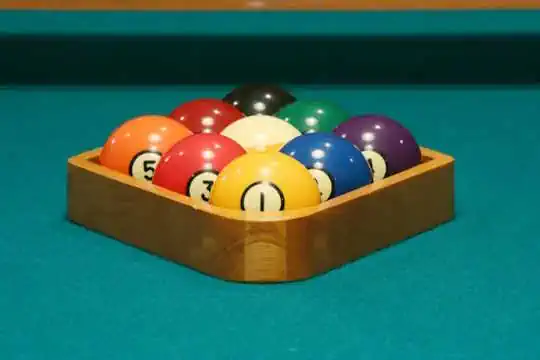
Welcome to the enthralling world of 9 Ball Billiards—a game of precision, strategy, and flair. Whether you’re a greenhorn to the billiard world or a pool aficionado taking the plunge into this specific variant. Understanding the nuances of 9 Ball can make your experience all the more enjoyable and challenging. This guide was crafted to walk you through the ins and outs of 9 Ball, providing the foundation you need to start sinking those balls like a pro.
Equipment Needed
Before you start hitting the balls, it’s crucial to ensure you have all the necessary gear. For a game of 9 Ball, you’ll need a set of pool balls, a table that meets regulation standards, a cue ball, a cue stick, and a rack. Each piece of equipment plays a pivotal role in the game.
The Nine Ball Pool Table
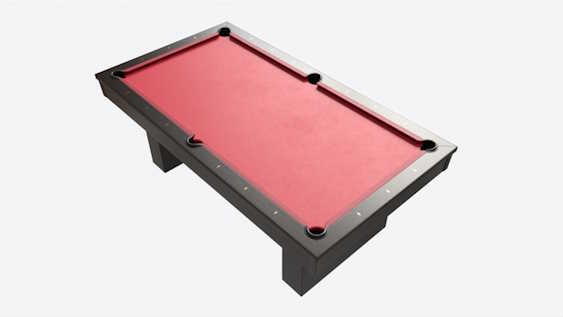
The pool table is your arena; it should be 9 feet long and 4.5 feet wide if you’re going for regulation size. You’ll learn to use its dimensions to your strategic advantage as you advance in the game.
Cue Stick
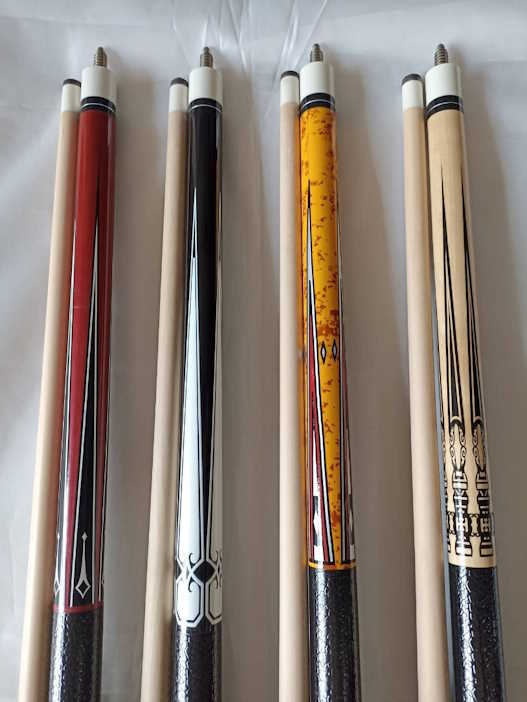
Choose a cue stick that feels comfortable in your hand. The quality of the tip and the flexibility of the shaft can significantly impact your shots. And remember, your cue isn’t just an extension of your arm; it’s your precision tool.
If using a cue stick at a bar or club, roll the cue on the pool table. Watch the tip and look for large variations. This will tell you if the cue stick is warped which can seriously impact game play and shot consistency.
Rack
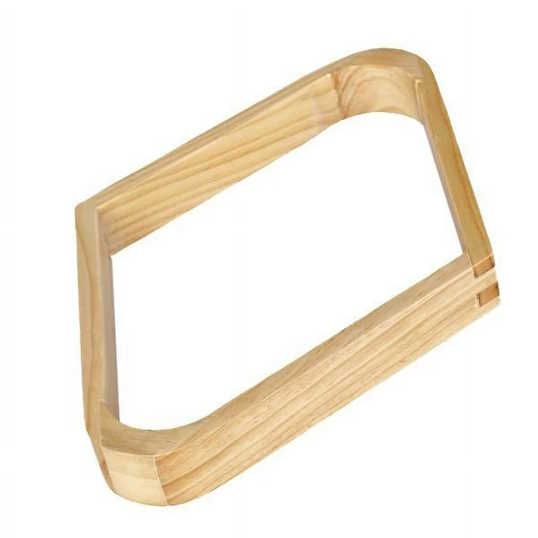
The triangular rack is used to set up the balls at the beginning of each game. Racks are typically made of wood or plastic and come in various sizes to fit different balls.
Basic Rules of the Game
Getting started with Nine Ball Billiards is easier than you might think. The game is played with nine numbered object balls (1-9) and the cue ball. The main goal? To legally pocket the 9-ball and win the game. But, as with any adventure, there are a few rules to keep in mind:
The Break: The game kicks off with a break shot. The balls are set up in a diamond shape, and for a legal break the player breaking must hit the 1-ball first, sending at least four balls to the cushions unless a ball is pocketed.
Taking Turns: Players take turns, and the key is to hit the lowest numbered ball on the table first. However, any ball can be pocketed as a result of this hit.
Combination Shots: It’s legal and often strategic to use a combination shot to sink the 9-ball early, as long as the lowest numbered ball is hit first. If you successfully pocket the 9-ball in this way, you’ve won the game. You can also use a combination shot to continue play as long as you hit the intended object ball first.
Fouls: Keep an eye out for fouls like failing to hit the lowest numbered ball first, hitting the wrong ball or not hitting any balls at all. After a foul, the incoming player gets the ball ‘in hand’, meaning they can place the cue ball anywhere on the table. In tournament level play, three consecutive fouls results in a victory for you opponent.
Remember, 9 Ball Billiards is as much about strategy as it is about skill. Use these rules to guide your pool games, and you’ll find each match is a new opportunity to learn and grow. And most of all, don’t forget to have fun and enjoy the camaraderie around the pool table.
Objective of the Game
In Nine Ball Billiards, the primary goal is simple enough—be the first to pocket the 9 ball legally. However, the path to this victory requires the pocketed balls to shot in order one ball at a time. We start with the lowest ball left on the table after a legal break shot.
Scoring
Players score points by legally pocketing an object ball, but the value of the object ball isn’t static. The 1 ball is worth one point, the 2 ball two points, and so forth, all the way up to the 9 ball, which is, naturally, worth nine points.
Winning Conditions
To win a game, you must score at least as many points in a single inning (a legal shot leading to a successful pocketing of an object ball) as there are balls on the table. You achieve an ‘instant win’ by pocketing the 9 ball out-of-order, named a ‘slop shot.’ This can be done on the break or by hitting an object ball first and using that object ball to sink the 9 ball. This is often referred to as a combination play.
Game Setup
Next up, the 9 Ball setup is critical. Properly arranged balls set the stage for fair play and strategic potential.
Rack the Balls
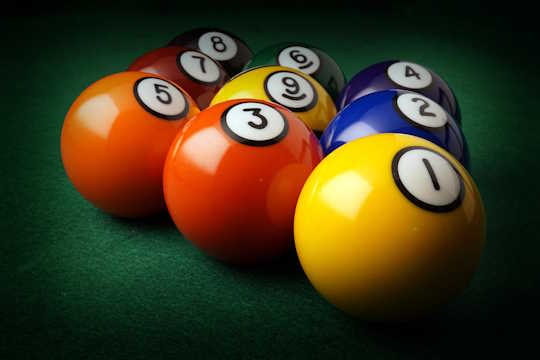
Place balls 1 through 8 in the 9-ball diamond, randomly within the triangle. The 1 ball should be at the front, with the 9 ball in the middle, and the remaining balls placed with your preferred pattern.
Positioning the Rack
Position the racked balls with the apex ball on the foot spot and aligned with the corner of the table.
Gameplay Steps
Understanding the mechanics of the game is crucial. Each turn requires finesse, calculation, and an understanding of the rules to progress smoothly.
The Break
The game begins with the break—a single, dynamic shot to scatter the racked balls. The breaker must hit the 1 ball first or drive at least four numbered balls to cushions.
Legal Shots
Keep in mind that you must always hit the lowest-numbered ball first except for the break. Failure to do so or sinking the cue ball results in a foul.
Sinking Balls in Order
After the break, players must pocket the balls in numerical order. The 9 ball should be pocketed for the win, but not before the other balls are gone.
Winning the Game
To win, pocket the 9 ball legally after the 1 through 8 balls have been cleared, or by executing an instant win as previously described.
Tips for Beginners
Starting out, 9 Ball can be daunting, but with the right attitude and a few pointers, you’ll be well on your way to dominating the game.
Cue Handling
Practice a relaxed grip. Tension and over-gripping can lead to inaccurate shots. Find a grip that feels secure but allows for a smooth cue delivery.
Aim and Sighting
Develop a consistent pre-shot routine to improve your aim. Choose a point on the cue ball as your reference, align it with the ball you aim to hit, and visualize the path of the target ball into the pocket.
Positioning the Cue Ball
Mastering cue ball placement is key. Your ability to set up your next shot by the appropriate leave will make the difference between a good and a great game. Make sure the cue ball contacts the intended object ball before hitting any other balls.
Strategic Play
Challenge yourself to think ahead. Contingency plans and leaving the cue ball in an advantageous position for your next shot can be the defining strategy in 9 Ball.
Defensive Play
Stepping into the world of 9 Ball Billiards, mastering defensive play is as crucial as pocketing the ball. Sometimes known as “playing safe,” defensive strategies can turn the tide of the game in your favor, especially when a clear shot is out of reach.
The essence of defensive play lies in positioning the cue ball or the object balls in a way that challenges your opponent. It’s about creating scenarios where your opponent has no direct shot, or better yet, setting them up for a potential foul.
A well-thought-out defensive shot can force your opponent into a difficult position, buying you time to regain the upper hand. Remember, the core of a good defensive strategy isn’t just about making it hard for your opponent to pocket a ball, but also about thinking several moves ahead, just like chess.
Try to visualize the table from your opponent’s perspective, and ask yourself, “What move would I least like to be faced with?” With practice, defensive play will become a formidable part of your arsenal, offering a deeper layer of strategic depth to your game.
Conclusion
The beauty of 9 Ball Billiards lies in the blend of skill and calculated risk. Each shot holds the potential to change the game’s trajectory, and it is this complexity that captures the hearts of players worldwide. Patience, practice, and persistence are your allies.
Go ahead, set up that rack, chalk up, and take aim. Embark on your 9 Ball adventure, absorb the fundamentals from this guide, and, most importantly, savor every moment at the table.
Frequently Asked Questions (FAQ)
Q: How can I improve my break in 9 Ball?
A: Practice your stance and cue grip to ensure you’re generating maximum power and control. Experiment with different positions to find the sweet spot. It’s also helpful to watch experienced players and learn from their techniques. Just be sure to always hit the one ball as your first ball. It is the only legal ball the cue ball strikes on initial impact. If the cue ball continues on and hits other object balls after hitting the one ball that is all part of a legal break.
Q: Is it better to play defensively or offensively in 9 Ball?
A: It often depends on the situation at hand and your skill set. A balanced approach that incorporates both offensive shots when opportunities arise and defensive strategies to unsettle your opponent can be most effective.
Q: How can I avoid fouls during the game?
A: Always aim to hit the lowest-numbered ball on the table first, and ensure that you or your opponent makes a legitimate attempt to pocket a ball. Practice cue control and familiarize yourself with the game’s rules to minimize fouls.
Q: Can I practice 9 Ball by myself?
A: Absolutely! Practicing by yourself allows you to focus on specific areas of your game, including break shots, strategic positioning, and defensive plays. It’s a great way to refine your skills.
Q: What’s the best way to deal with losing streaks?
A: Facing losses can be challenging, but it’s part of the learning process. Take each loss as an opportunity to reflect and identify areas for improvement. Stay positive, keep practicing, and remember that persistence is key to overcoming obstacles.
Remember, the path to mastering 9 Ball lies in understanding the nuances of the game and constantly striving to improve. Don’t hesitate to reach out to more experienced players for advice, and most importantly, enjoy the journey and the growth it brings.
